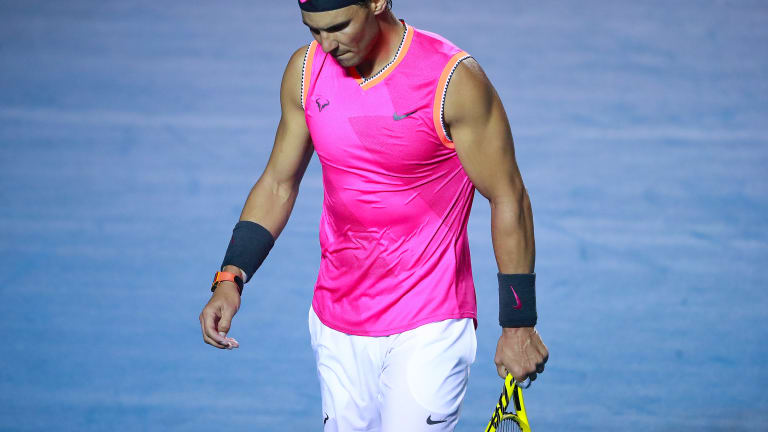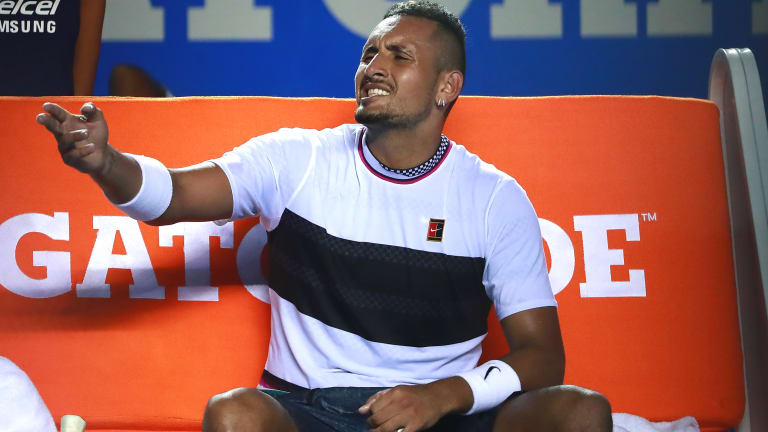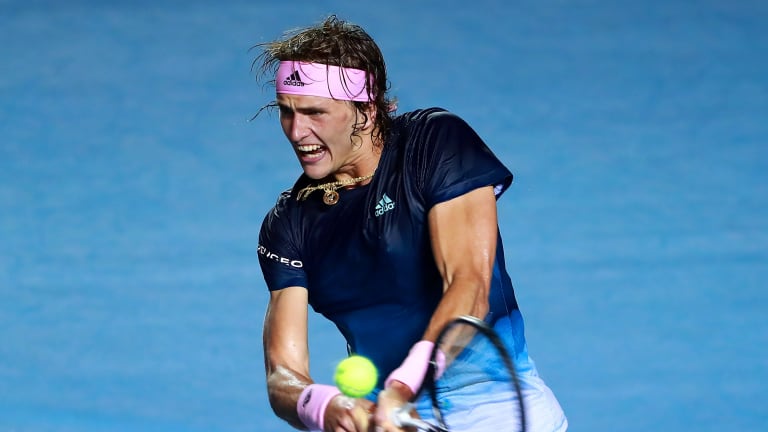So far, Rafa has yet to be proven wrong. Kyrgios’s career-high ranking is No. 13, and he started this week at No. 72. After reaching the quarterfinals at Wimbledon in 2014, he’s reached just one more Grand Slam quarter, at the Australian Open the following year. Injuries and a well-documented ambivalence toward the sport have kept Kyrgios from fulfilling his obvious potential.
Nadal may have foreseen all of that in 2014. It’s also possible that he was reluctant to sing Kyrgios’s praises because (a) the kid had just knocked him out of Wimbledon, and (b) he rubbed him the wrong way. Which would hardly be surprising, because Nadal and Kyrgios are about as diametrically opposed—temperamentally, stylistically, philosophically—as two people who play the sport can get.
Nadal tries to control the tempo of match by slowing it down; Kyrgios tries to control the tempo by speeding it up. Nadal is one of the sport’s most driven and intense competitors, who sweats the details and digs as deeply as he can to win every match, and virtually every point. All athletes are competitive, but few have dramatized their passion for the fight with Nadal’s gusto. As for Kyrgios, you never know what level of interest you’re going to get from set to set and match to match. At times, as he tosses in serves, jaws with fans, and stands flat-footed to hit ground strokes, he seems bent on subverting the whole idea of competition. He’ll always draw a crowd, but fans are just as likely to walk away from his matches confounded by his mercurial performances as they are thrilled by them.
Even more aggravating, in Nadal’s case, is that Kyrgios tends to care when he plays him, and the 6’5” Aussie’s penchant for blasting returns and bombing 120-M.P.H. second serves works well against Rafa’s high-bouncing topspin. Before this week, Nadal led their head to head 3-2, but Kyrgios’s unpredictable talents have always made him edgy.
In short, a conflagration between Nadal and Kyrgios was probably inevitable, and it finally happened on Wednesday in Acapulco. As a show, it didn’t disappoint. In the year’s most entertaining contest so far, Kyrgios squeaked past Nadal 3-6, 7-6 (2), 7-6 (6).
It was vintage Kyrgios all the way through. He began looking injured and possibly ill, and seemed on the verge of retiring. But at the start of the second set, he also seemed to sense some vulnerability, some anxiety, in Nadal, and decided to forget about whatever was bothering him and compete. The result was a shot-making exhibition.
In the second set, Kyrgios saved three break points at 4-4, and then saved three match points in the third-set tiebreaker. At one stage, seeing Rafa parked at the back of the court, he threw in an underhanded serve (a perfectly acceptable tactic, no different than throwing in a drop shot in the middle of a rally). At another point, he complained about Nadal taking too much time to get ready to return his serve. Afterward, Nadal gave Kyrgios a drive-by handshake and let his feelings about the Aussie be known.
While telling reporters that he thinks Kyrgios is a “good guy“ who “could be fighting for Grand Slams,” Nadal also said he “lacks respect for the crowd, his opponent, and towards himself.”
“He doesn’t know anything about me,” Kyrgios responded. “So I’m not going to listen at all. That’s the way I play.”
“The way he plays is very slow in between points. The rule in the book says he has to play to the speed of the server, but Rafa has his speed every time, so I’m not going to comment on him.”


